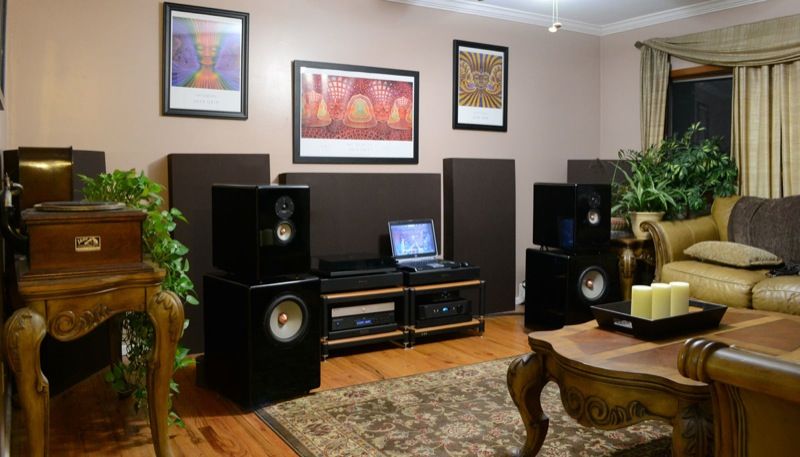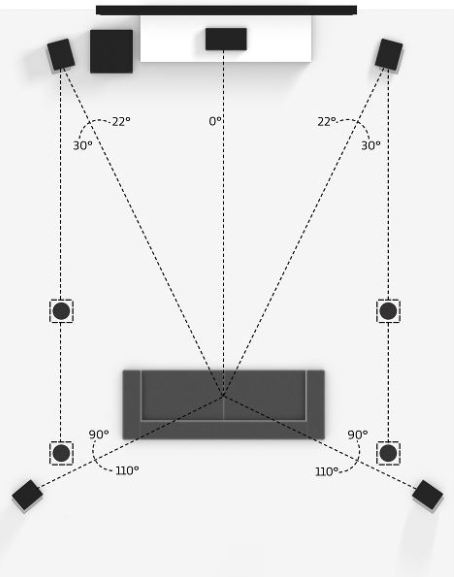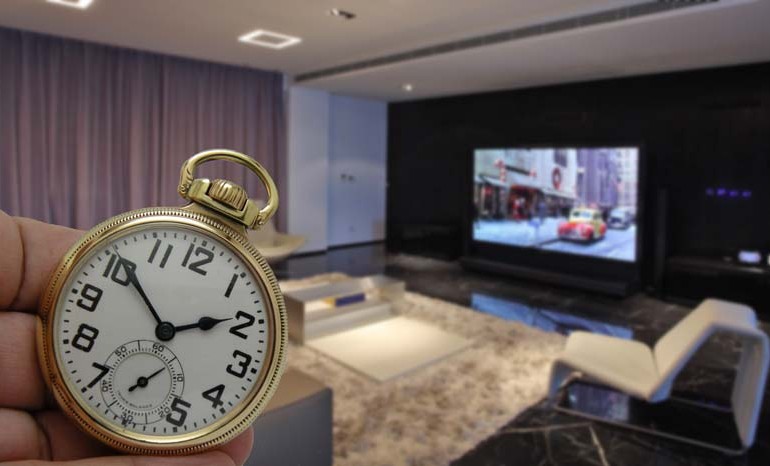6 Steps to Know When it is Time to Upgrade Your Speakers
We often are approached by people that want to upgrade their speakers. They want to know what to buy. Hold on there buddy. Don’t put the cart before the horse. What you think is that you can spend some more money and get better sound in your home theater. But that’s not always the case. There are a lot of things you have to do before you start shopping for speakers. Follow our 6 steps to make sure you know it is time to upgrade your speakers.
Step 1: Treat your Room
Before you can know that it is time to upgrade your speakers, you need to take the room out of the equation. We’ve talked a lot about room treatments and their importance. Your room contributes a lot to the sound you experience in your space. If you haven’t treated your room, it is not time to shop for a speaker upgrade.

Now, there are lots that you could do to a room to make it sound better, but in a space you need to live in, there are limited things you can actually do. When we say you need to treat your room, we don’t mean you have to follow every guide and place room treatments everywhere. Instead, we mean you need to treat your room as much as you can. This may mean a few spot treatments or panels everywhere you can (even on the ceiling). What is important is that you don’t start to shop for speakers before you fix the room acoustics as best you can.
Step 2: Upgrade Equipment
If you know it is time to upgrade your aging receiver soon, go ahead and do that before shopping for speakers. New receivers have better room correction that can make your old, or new, speakers sound much better in your room. While we don’t expect this to make a night and day difference, you already have speakers. Go ahead and do that component upgrade before shopping for speakers.
Step 3: Adjust Positioning
Positioning of speakers and seating recommendations have changed over time. If you set up your home theater speakers years ago, you may want to revisit the more current recommendations. Newer audio codecs like Dolby Atmos and DTS:X have changed how we set up our speakers. If you are still set up for Dolby Digital, you may need to readjust your positioning.

Also, take a look at your room layout. Are you sitting in the center of the room? That’s not a great place for audio. What about with the couch pushed up against a back wall? Know that the time is now to reposition your seats and speakers, long before you start to shop for a speaker upgrade.
Step 4: Re-run Room Correction
If you’ve upgraded your receiver, added some room treatments, or repositioned your speakers/furniture, you’ll need to re-run your room correction system. The room correction programs can really dial in your speaker performance. By making the above changes, you have changed how your speakers sound in a room. Your old room correction settings will no longer apply.
Step 5: Buy Speakers
Yea! It’s time to shop for the speakers upgrade you always knew you needed! How exciting! But, here’s the thing – start with speakers you can easily return. There are manufacturers online that offer free returns and two-way shipping. You can find some of the same from Amazon. But you could also look around locally. While auditioning in a store can give you some information, you won’t know how the speakers will really sound until you get them home and hear them in your room.
Make sure you verify that you won’t have to pay a restocking fee or any other charges. Manufacturers like SVS and Aperion Audio have free two-way shipping with no restocking fees. Double-check your local retailers on their return policies before your buy.
Step 6: Be Ready to Send Them Back
Even if you’ve followed all the rest of the steps in this guide, you may find that you get your new speakers home and find out that they don’t sound that much better. They may even sound worse. How can this be?
- Sound the same: Your current speakers are already pretty good and your budget isn’t large enough to get a noticeable upgrade.
- Sound the same: Your room is having such an effect that any speaker upgrades are unnoticable.
- Sound worse: Your room is bad but your old speakers are bad in a way that works well with your room (lucky). The better speakers sound worse in your room because they highlight all the stuff wrong with your room.
In the first two cases, you’ve not wasted any money. You send back the speakers and either wait until you have more money or just rest easy knowing that your current speakers are doing as good a job as possible. You may wonder how you can know how much an effect the room is having. If you have read up on how to properly treat a home theater, you know how close you’ve gotten. If you are close, it probably isn’t the room. If you aren’t, it probably is.
But #3 is a bit different. In a bad room, speakers with suboptimal performance can actually be a benefit. When you get better speakers with more high-end extension and bass output, you may find that they actually sound worse than your “cheap” speakers. In such a situation, you have the option of either fixing (or changing) rooms so that you can buy better speakers. Or you can live with what you have until your life changes enough so that you can move your cinema area to a dedicated room.
Conclusion
Knowing when it is time to upgrade speakers seems like it should be a question of budget. You wait until you have enough money (raise, bonus, stimulus check, etc.) and then you start to shop. But if you really want to know that you are ready for a speaker upgrade, you need to prep your room. This will ensure that you know that the speaker upgrade is really making a difference.


